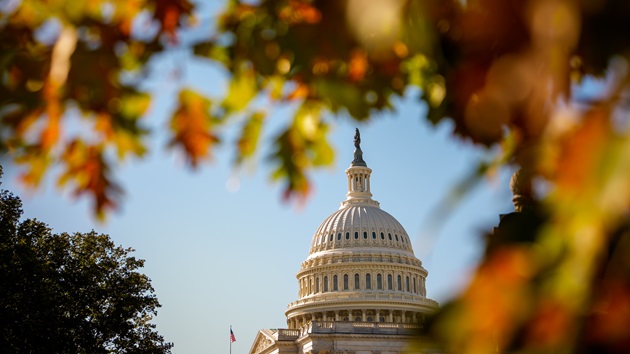Women reach heart health goals with less exercise than men, new study suggests
Written by ABC Audio. All rights reserved. on October 27, 2025

(NEW YORK) — Women may need less exercise than men to gain similar protection against coronary heart disease, according to a new study published in Nature Cardiovascular Research.
The findings come from an observational study of more than 85,000 adults in the United Kingdom who were followed for about seven years. Researchers used data from a one-time “snapshot” — a weeklong period of wrist-worn fitness tracker measurements — to examine how physical activity relates to heart disease risk and death rates.
The study found that women who got around four hours of moderate exercise each week lowered their risk of coronary heart disease by about 30%. However, men needed nearly twice as much — about eight hours of similar activity — to achieve the same level of heart protection. Additionally, women who already had heart disease experienced a threefold decrease in the risk of death compared with men with similar medical histories, who needed nearly twice as much weekly exercise to achieve a similar reduction in the risk of dying from any cause.
Moderate-intensity exercise includes activities like brisk walking or gardening — enough to get the heart pumping but not to the point of exhaustion, according to Dr. Jennifer Miao, a board-certified cardiologist and fellow of the ABC News Medical Unit. More vigorous workouts such as running, swimming laps or hiking uphill push the body harder and lead to a greater rise in heart rate, she explained.
The American Heart Association recommends that adults get at least two-and-a-half hours per week of moderate-intensity physical activity, or one-and-a-half hours per week of vigorous activity, or a combination of both. But even when following those exercise recommendations, the study found that differences between the sexes emerged.
Across all groups, the study confirmed that being active at any level was associated with a lower risk of heart disease compared with leading a sedentary lifestyle, with active women experiencing a 5% greater reduction in risk than active men.
And the more exercise someone got, the lower their risk of heart disease and death, highlighting what experts refer to as a clear dose-response relationship between physical activity and heart health.
There are two possible reasons women may benefit more from physical activity than men, according to the study authors. One explanation could be hormones.
“Physiologically, circulating estrogen levels are much higher in females than in males, and estrogen can promote body fat loss during exercise,” Dr. Jiajin Chen, one of the study’s authors and a researcher at the Institute of Cardiovascular Diseases in China, told ABC News.
Another possible reason has to do with muscle type. Men tend to have more “fast-twitch” muscles, which are great for quick, powerful movements. Women, on the other hand, usually have more “slow-twitch” muscles, which may help their bodies work a bit more efficiently during workouts.
“These physiological differences may partly explain the increased sensitivity to physical activity and greater cardiovascular benefit observed in females,” Chen said.
It’s also important to recognize how men and women can experience and be treated for coronary artery disease differently, Miao noted.
Women often develop the condition later in life, face a higher risk of death following a heart attack, and are less likely than men to undergo diagnostic procedures such as coronary angiography or receive standard medical care for coronary artery disease, she said.
Public health guidelines will benefit from acknowledging these sex-based differences to more effectively prevent cardiovascular disease, which is the world’s leading cause of death, the study authors suggest.
Miao agreed. She advised talking with your doctor before starting a new exercise routine, since physical activity recommendations depend on your fitness level, medical conditions, recent events like a stroke or heart attack, and overall mobility.
“Exercise routines should be personalized; it’s not a one-size-fits-all plan,” Miao said.
Dr. Cyrus Mowdawalla, MD, is a resident physician in internal medicine from Montefiore Medical Center and a contributing correspondent of the ABC News Medical Unit.
Copyright © 2025, ABC Audio. All rights reserved.





